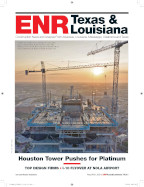
A new revenue recognition standard could soon create accounting murkiness for contractors and engineers, potentially changing the way some firms do business.
The International Accounting Standards Board and the Financial Accounting Standards Board recently approved a uniform revenue recognition method that consolidates and simplifies more than 200 items into a single approach.
While it does not begin to take effect until December 2016, for the U.S., and January 2017, for international, the new standard increases required disclosure information and could intensify financial and bonding scrutiny.
Experts say the new converged standard, enacted on May 28, is more principle-based than rules-oriented—resulting in subjective decision making for when and how much revenue should be recorded for such items as change orders, claims and incentives.
Revenue reporting for job-order contracting, engineering-procurement-construction and design-build—where tasks overlap and commingle—also becomes cloudier under the revised standard.
 |
| Armour |
But the new standard is critical to meeting U.S. Generally Accepted Accounting Principles, making it vital for company credit access and bonding capacity. Armour says lenders and sureties are “scared to death” because the standard creates situations where “judgment rather than a set of rules determine when things will come into play.” Banks and bonding firms may boost client analysis, although this may ease once the standard is better understood.
“I don’t believe it’s all that different, although there is a new approach in thinking through
 |
| Lords |
“The percentage-of-completion method, where revenue is recognized as work is performed, remains intact, for the most part,” adds Lords, who is CFO of Arizona Pipeline Co., Hesperia, Calif. But he fears “there will be misunderstanding and misinterpretation of the standard, resulting in contractors taking a hard line and doing things not required.”
All companies face greater disclosure requirements on subjects—including the nature, amount, timing and uncertainty of revenue and cash flows—that are not currently covered.
Construction accounting software will likely need updating and companies may have to restate revenue for the prior year after the standard is applied.


